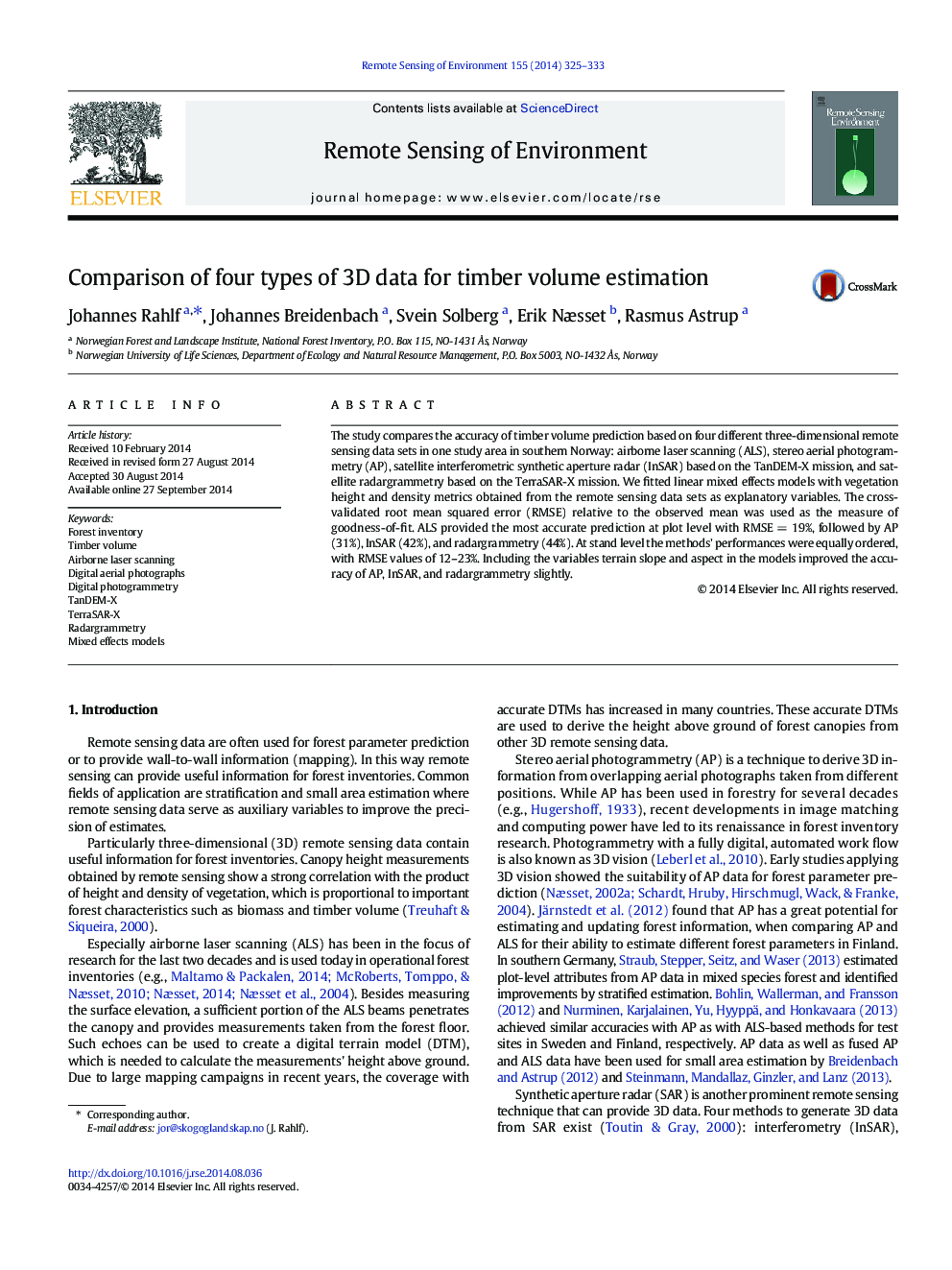| Article ID | Journal | Published Year | Pages | File Type |
|---|---|---|---|---|
| 6346626 | Remote Sensing of Environment | 2014 | 9 Pages |
Abstract
The study compares the accuracy of timber volume prediction based on four different three-dimensional remote sensing data sets in one study area in southern Norway: airborne laser scanning (ALS), stereo aerial photogrammetry (AP), satellite interferometric synthetic aperture radar (InSAR) based on the TanDEM-X mission, and satellite radargrammetry based on the TerraSAR-X mission. We fitted linear mixed effects models with vegetation height and density metrics obtained from the remote sensing data sets as explanatory variables. The cross-validated root mean squared error (RMSE) relative to the observed mean was used as the measure of goodness-of-fit. ALS provided the most accurate prediction at plot level with RMSEÂ =Â 19%, followed by AP (31%), InSAR (42%), and radargrammetry (44%). At stand level the methods' performances were equally ordered, with RMSE values of 12-23%. Including the variables terrain slope and aspect in the models improved the accuracy of AP, InSAR, and radargrammetry slightly.
Keywords
Related Topics
Physical Sciences and Engineering
Earth and Planetary Sciences
Computers in Earth Sciences
Authors
Johannes Rahlf, Johannes Breidenbach, Svein Solberg, Erik Næsset, Rasmus Astrup,
